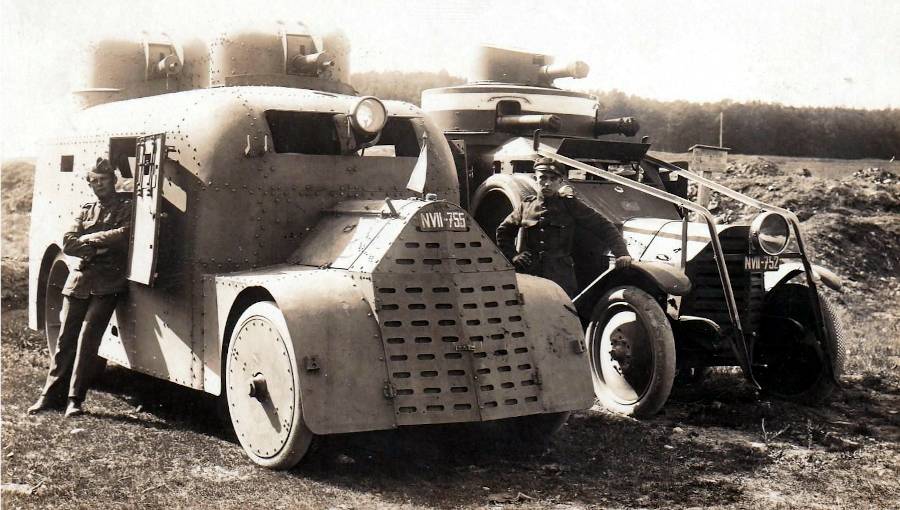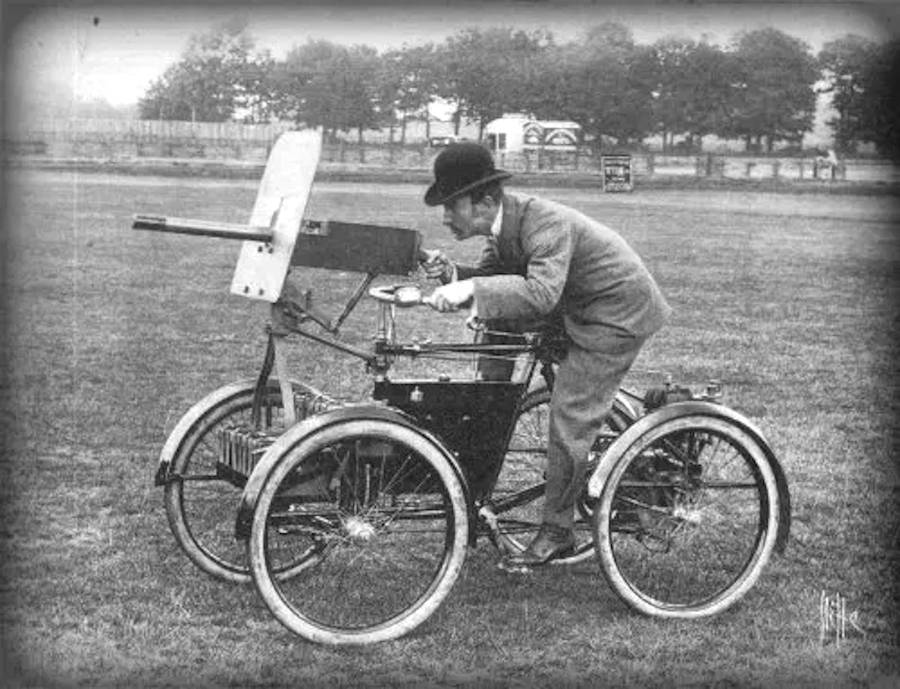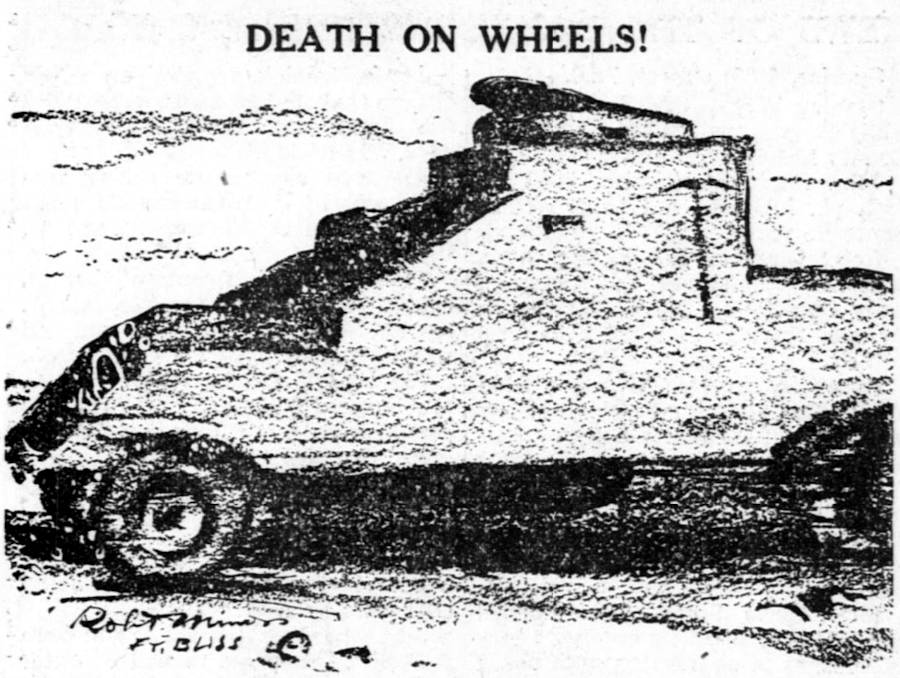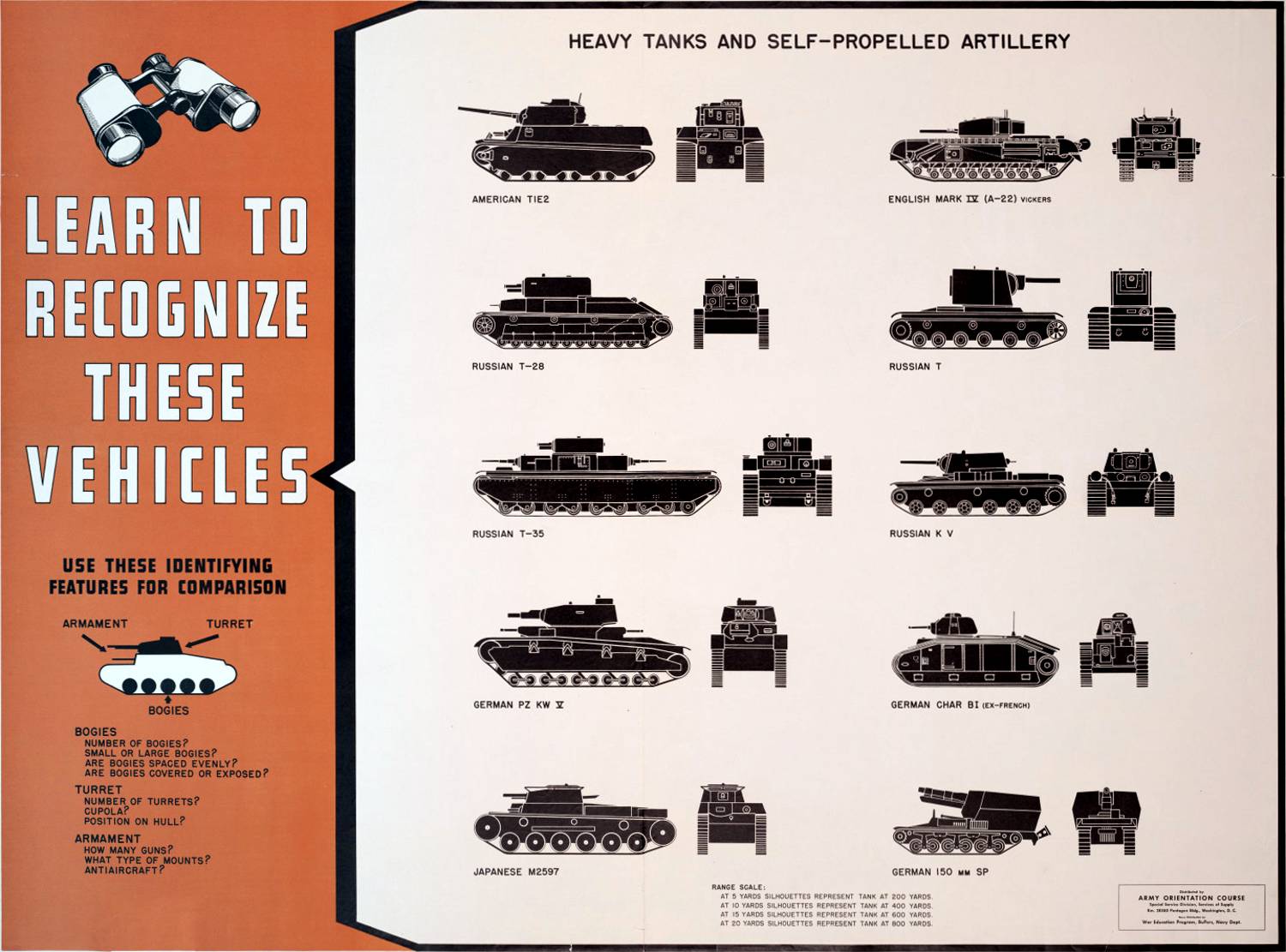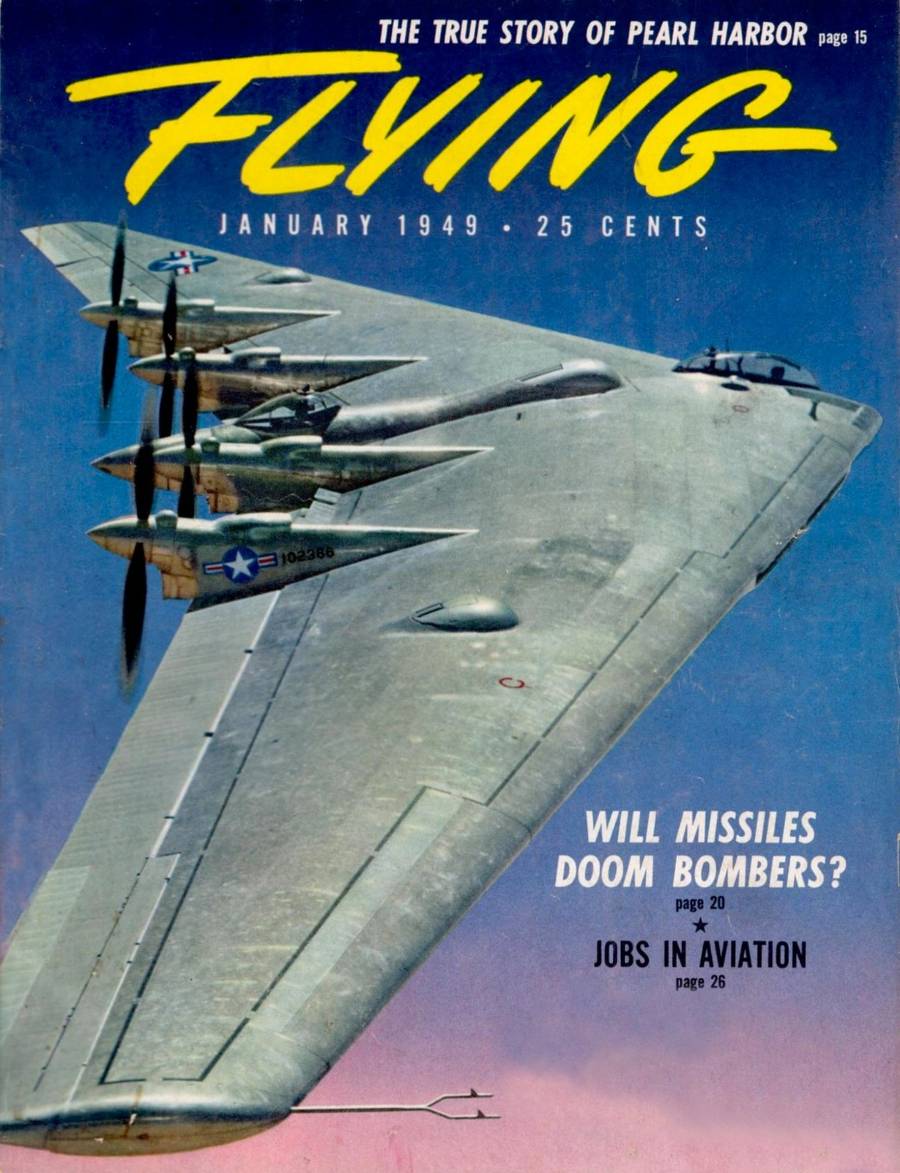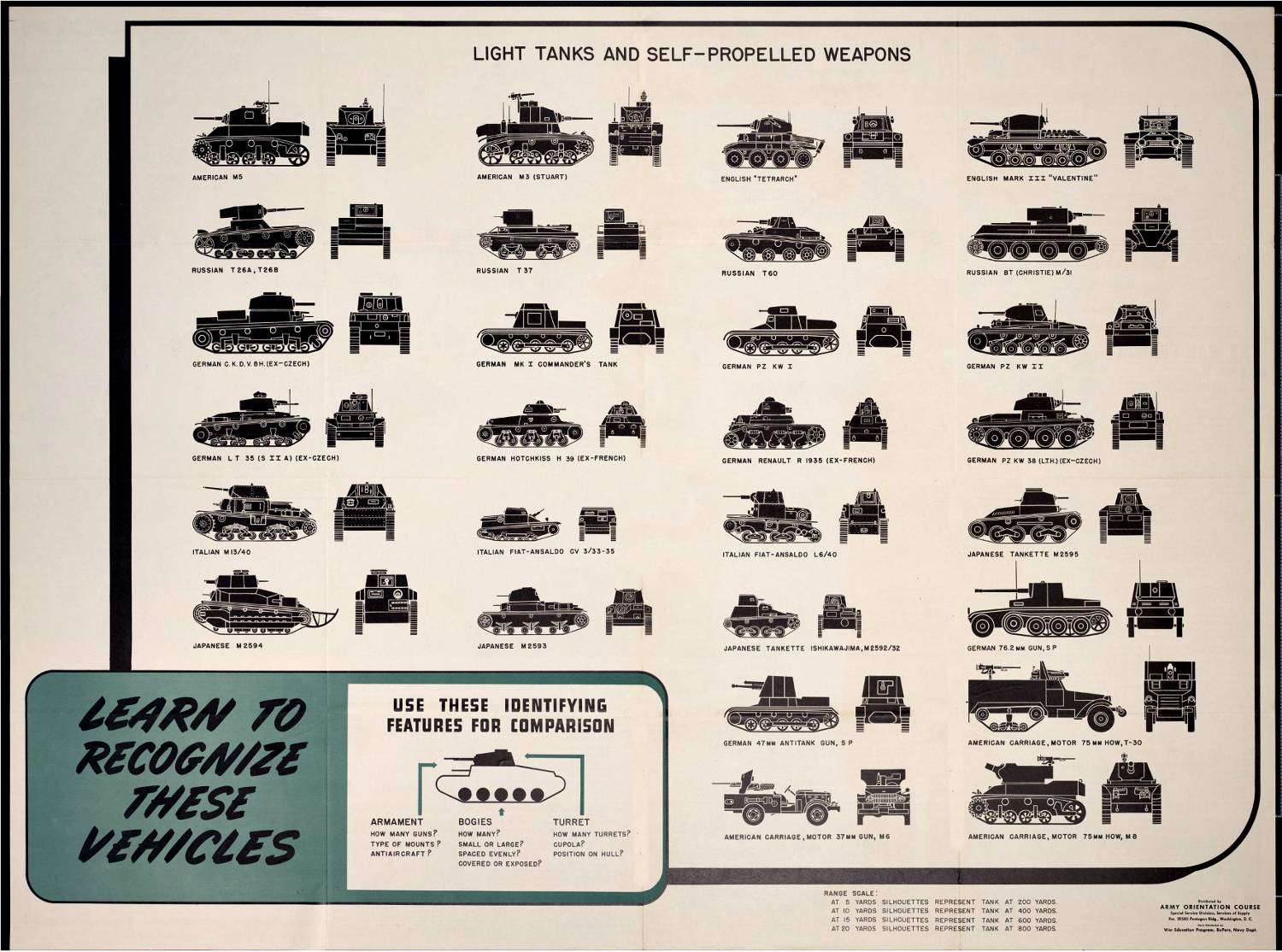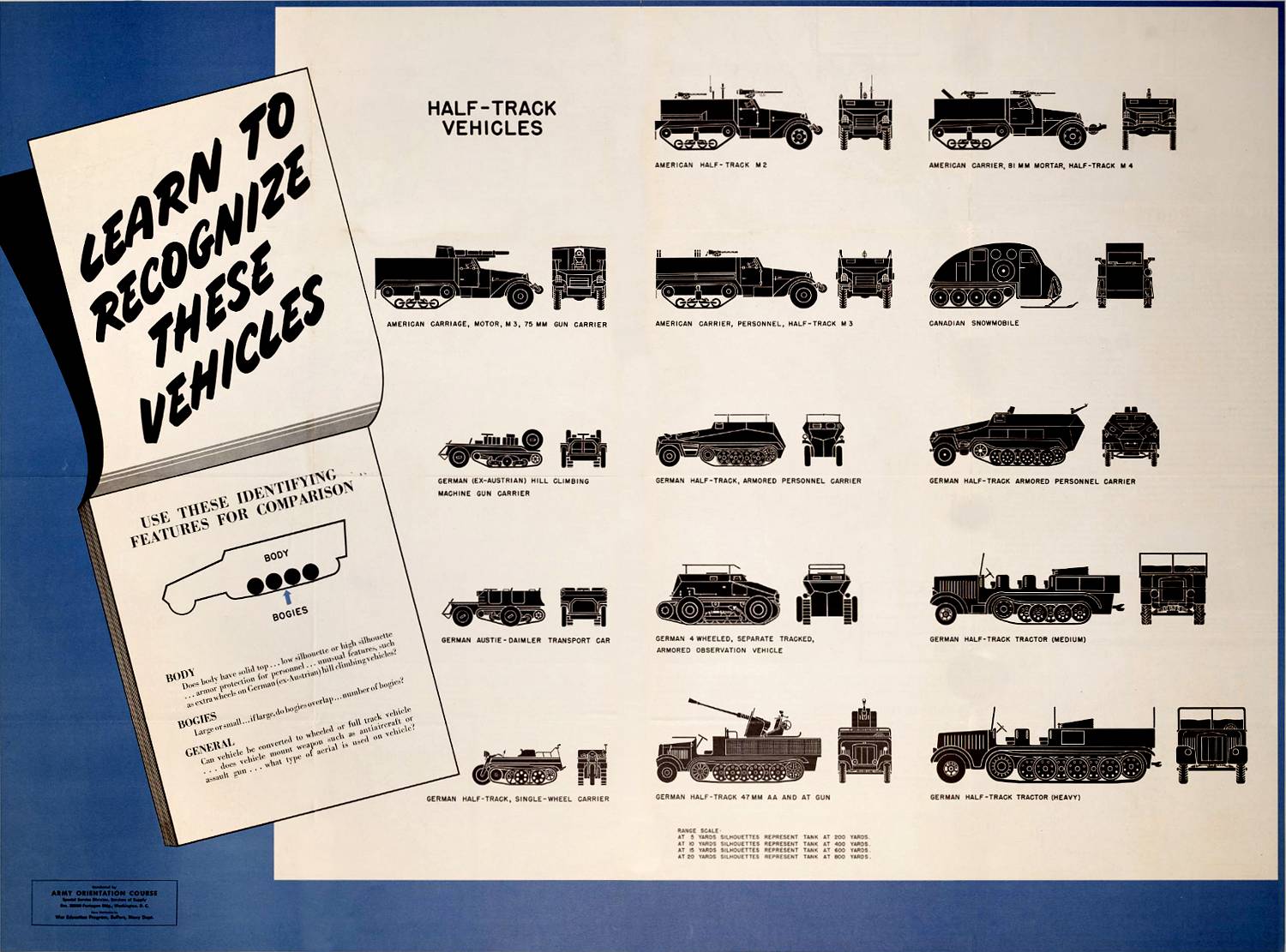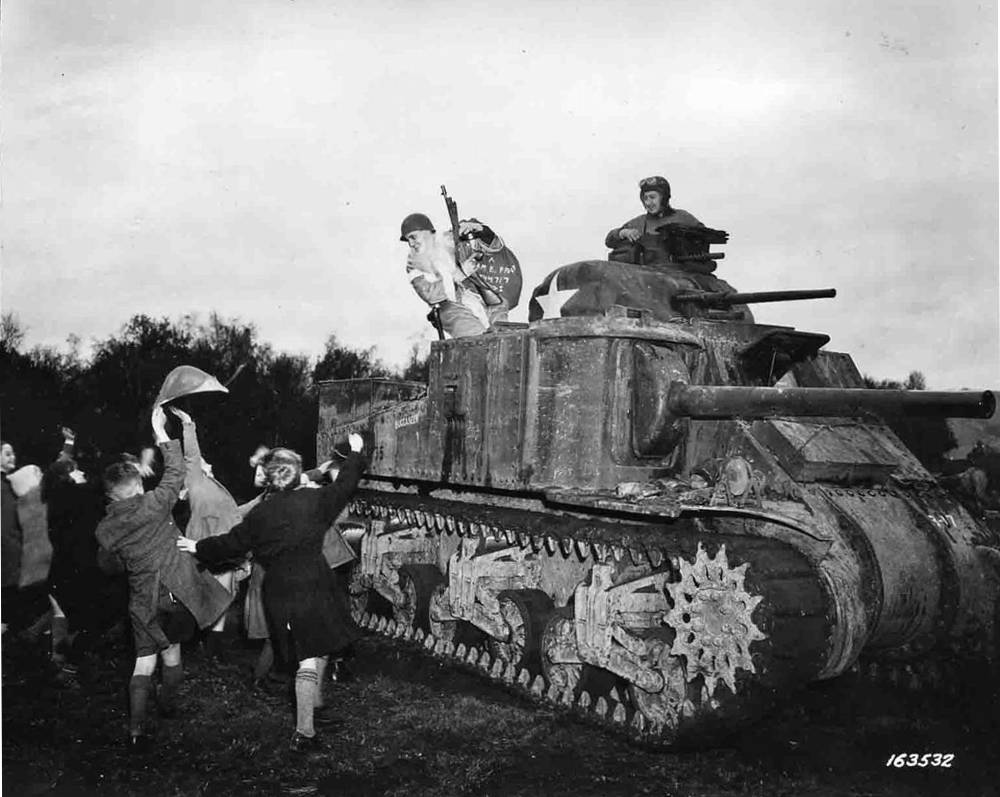Category: War Machines
Simm’s Motor Scout
The Simm’s Motor Scout, deigned and built by F.R. Simms in 1889, was the first armed, gas powered, vehicle ever built. It was not designed as an off-road vehicle, but designed to provide support for infantry where roads were available.
The Motor Scout was armed with a Mark IV Maxim machine gun. and could travel 120 miles on a tank of gas
Death On Wheels, 1916
Robert Minor, famous artist on the Mexican border for the Day Book sketched this picture on one of Uncle Sam’s armored autos at Ft. Bliss, just outside of El Paso. Uncle Sam has four of these death dealers at his call, three belonging to the regular army and one to a New York Regiment of militia. Armored cars of this type were first used in the European war. There is room in this car of Uncle San’s for six men, besides the driver. and a machine gun. There are loopholes in the armor through which the men may discharge rifles at the enemy.
Heavy Tank Recognition Chart
Northrop YB-35
The Northrop XB-35 and YB-35 were experimental heavy bomber aircraft developed by the Northrop Corporation for the United States Army Air Forces during and shortly after World War II. The airplane used the radical and potentially very efficient flying wing design, in which the tail section and fuselage are eliminated and all payload is carried in a thick wing. (Wikipedia)
Continue reading “Northrop YB-35”
Light Tank Recognition Chart
Half-Track Recognition Chart
Messerschmitt Me 323 Gigant
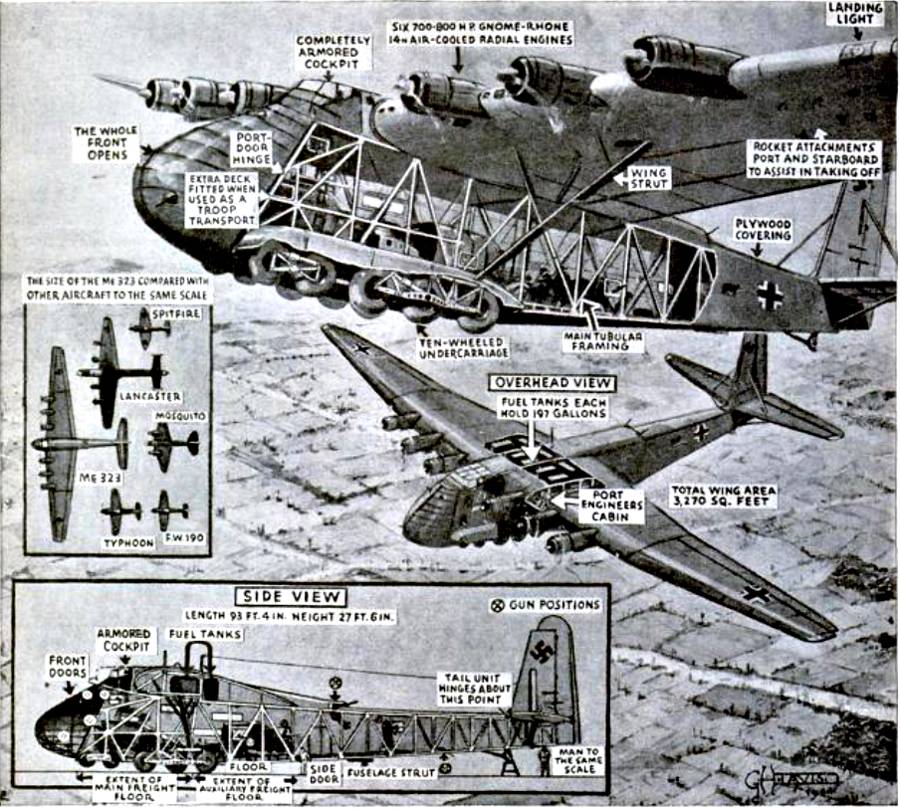 Messerschmitt Me 323 Gigant was a German military transport aircraft of World War II. It was a powered variant of the Me 321 military glider and was the largest land-based transport aircraft of the war. (Wikipedia)
Messerschmitt Me 323 Gigant was a German military transport aircraft of World War II. It was a powered variant of the Me 321 military glider and was the largest land-based transport aircraft of the war. (Wikipedia)
Illustration by G H Davis for The Illustrated London News Continue reading “Messerschmitt Me 323 Gigant”
Defending Panama, 1915
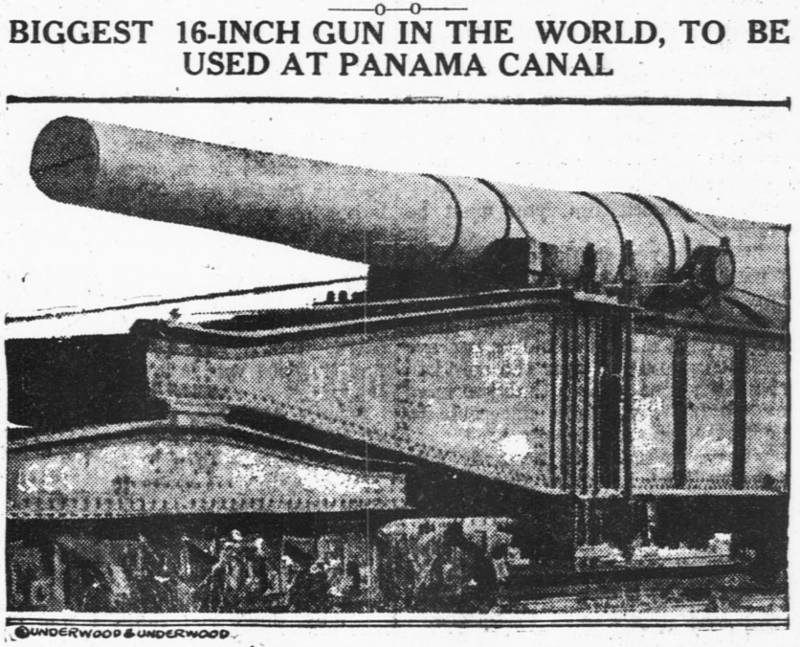 This is one of the big monsters upon which America will have to rely for protection against any foreign power that may get the notion to seize the Panama Canal. This sixteen inch disappearing gun is the biggest gun of its class in the world and is capable of throwing a projectile twenty-one miles. The gun proper weighs 200 tons and was made some months ago at Watervliet, N. Y., from where it was shipped to Watertown, Mass., to have the carriage fitted. Several times along the way its extraordinary weight spread the rails. Dec. 10th it was shipped to Sandy Hook proving grounds on a train of fourteen specially constructed cars. The gun will, ultimately used in the fortifications at the Panama Canal. The picture shows the gun on the carriage and the specially constructed cars which were used to transport it.
This is one of the big monsters upon which America will have to rely for protection against any foreign power that may get the notion to seize the Panama Canal. This sixteen inch disappearing gun is the biggest gun of its class in the world and is capable of throwing a projectile twenty-one miles. The gun proper weighs 200 tons and was made some months ago at Watervliet, N. Y., from where it was shipped to Watertown, Mass., to have the carriage fitted. Several times along the way its extraordinary weight spread the rails. Dec. 10th it was shipped to Sandy Hook proving grounds on a train of fourteen specially constructed cars. The gun will, ultimately used in the fortifications at the Panama Canal. The picture shows the gun on the carriage and the specially constructed cars which were used to transport it.
(The Day Book (Chicago, IL), December 15, 1915)
